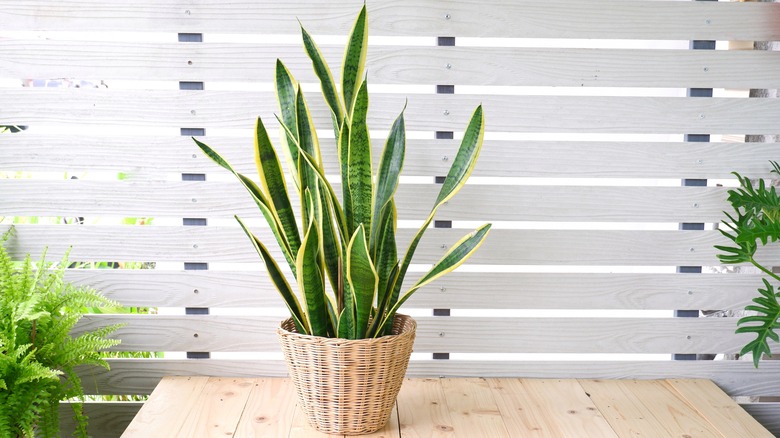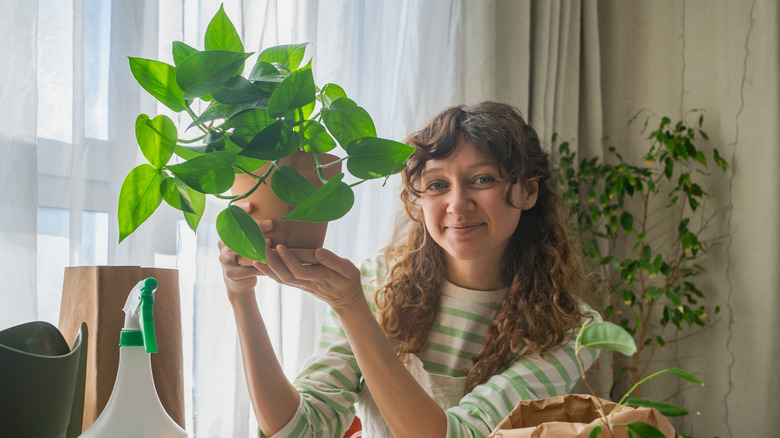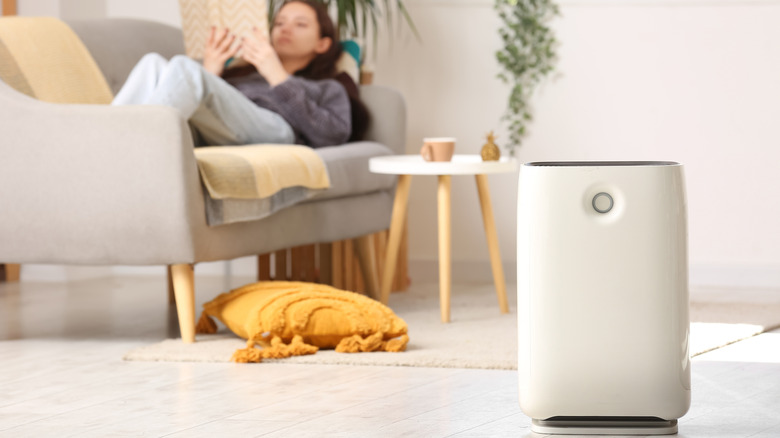Houseplants Won't Purify Your Home's Air: How NASA's Study Created A Myth
It happened like this: The end of a decade of fast-paced change was looming. NASA was in the spotlight, pressured to provide both solutions and a justification for U.S. national pride. The space agency was in a race with its Soviet counterparts to solve what had suddenly become one of the most urgent matters of human endeavor. This was not a time to celebrate or reward incremental progress. What NASA needed was an outright victory to put the U.S. firmly in the driver's seat in the field of ... houseplant selection.
While the Space Race was "won" 20 years earlier, things were different by 1989. While in friendly cooperation with a Siberian team led by Josef Gitelson, NASA was working out how to use ecological principles and systems in engineered, closed systems like a spacecraft, but also in commercial buildings that were tightly sealed and increasingly suspected of sick building syndrome as a result. A new concept called "phytoremediation" (using plants to clean environments) was emerging, and NASA did some research about how plants might help to purify air — in a space station, sure, but also back on Spaceship Earth as well. Things promptly went off the rails.
In the intervening years between 1989 and today, NASA's conclusions have been almost universally misunderstood and misreported by optimists, horticulturalists, con artists, and journalists. This particular brand of misinformation will probably be immediately familiar. It usually follows a format like this: NASA says these plants will clean your home's air. Unfortunately, their findings aren't as simple as that.
NASA's clean air study explained
The ability of potted houseplants to clean a home's air is not what NASA's research showed. It is, however, pretty close to what NASA claimed about the research. The NASA Clean Air Study, and the 1989 report about it that started all the trouble, was a cooperative effort between the agency and the Associated Landscape Contractors of America (ALCA), surely the most terrestrial member of any NASA public-private partnership. It was a sensible bit of teamwork, because while the goal of the project was to find ways to clean air in closed-chamber applications like space stations, the broader implications were explicit. The energy crisis of the 1970s had spawned efficiency-oriented building practices that sealed buildings tight and resulted in health concerns collectively described as sick building syndrome. If plants could clean the air in space vehicles, perhaps they could clean the air in these hermetically sealed earthly environments as well.
The research did, in fact, show that plants could reduce concentrations of volatile organic compounds (VOCs) — the original experiments tested benzene, trichloroethylene, and formaldehyde — that had been introduced to "sealed experimental chambers." Subsequent research extended the findings to xylene and ammonia and also to plants not included in the NASA study. However, these findings did not mean that plants alone would be sufficient for cleaning the air, and NASA never said they did.
How almost everyone misinterpreted the NASA research
What NASA scientists actually claimed in the 1989 final report is a little vague, but the implication seems to be that the most promising technology for both sealed spacecraft and earth-bound buildings involves plants, exposure of their root zones to air, and filtration of air through activated carbon by means of powerful fans. As NASA said in the 1989 report, "Activated carbon filters containing fans have the capacity for rapidly filtering large volumes of polluted air and should be considered an integral part of any plan using houseplants for solving indoor air pollution problems." There's not enough data in the report to determine what percentage of the air-cleaning they found was attributable to carbon filtering, but it's clear from the comparative rates of cleaning that a system combining plants, activated carbon, and high-volume fans was far faster than the plants alone.
But what NASA certainly never said is that you can stick a pothos in the corner and your air will become clean. Unfortunately, lots of writers have said it, or something similar. There are articles, guides, and infographics about the air-purifying plants, and even a NASA-sponsored website that features various projects and products derived from the clean air study. Then there were perversions like the viral Facebook rumor in 2023 that further distorted NASA's findings, claiming that six to eight snake plants could generate enough oxygen for a single human's survival. (This claim seems to have been created from whole cloth rather than some kind of misunderstanding, as there is nothing similar in the NASA report.) All the while, researchers were digging in and discovering the truth.
Why houseplants won't purify your home's air (& the research that proves it)
A 2019 review of 12 published studies concluded that the evidence for plants as home air purifiers was irrelevant, or at least not applicable, to modern buildings. Those studies had examined the effects of houseplants in a very narrow range of circumstances and with air volumes that come nowhere near those of a modern home. By 2019, building ventilation practices had changed substantially, and today, the rate of air changes per hour (ACH) for modern construction residences can greatly vary, but it's typically between 0.5 and 1. A rate of 1 means that all the air is changed once every hour, while 0.5 means half the air is changed every hour.
Both are radically faster than the speediest snake plant. The 2019 study concluded that it would take 10 plants per square meter of a home's floor space to purify the correlated air volume. But since modern air exchange systems greatly multiply this air volume, 100 to 1,000 plants per square meter might be required to keep the frequently changed air cleaned.
A 2023 meta-analysis of 41 chamber studies and 16 field studies found that the difference in air exchange, exposure duration, and "green coverage" (that is, the percentage of plants per unit of floor space or room volume) between chamber and field studies has made it impossible to translate results from one study type to the other, and presumably to translate chamber results to real-life home situations. In other words, you can't read the NASA study and conclude that it applies to your living room.
Is the air-cleaning plant dream really over?
Perhaps the most telling metric is that space agencies, including NASA, didn't use plants as a primary means of air quality control on the International Space Station (ISS). One reason might be that the idea of a spacecraft as a sealed chamber turns out to be false; the ISS gets 8 to 10 air changes per hour, radically more than modern homes. Instead, ISS engineers rely on a system of chemical and filtration processes (including activated carbon) called the Environmental Control and Life Support System (ECLSS) to produce clean air.
Whether there's still any potential in phytoremediation remains to be seen, even after all these years. Science is an iterative process. Technology — that is, applied science — can take a very long time to mature, and sometimes new developments render the tech obsolete before it's even finished. And so it is with home ventilation: HVAC system improvements have largely erased the benefits of phytoremediation. But some research, including one 2011 case study, has said that plants, in combination with ventilation, can improve formaldehyde removal. And that 2023 meta-analysis of chamber and field studies observed that, in very polluted environments, ventilation can be a net cause of indoor air quality issues.
One such environment is New Delhi, where TED Talk star and business owner Kamal Meattle decided to test cleaning air with areca palm, mother-in-law's tongue, and money plant, along with filters, because local air pollution caused ventilation to worsen indoor air quality. Meattle documented some promising results. But the research doesn't appear to be available via any of the usual academic channels, and it's considered scientifically unsupported.
What should you do to get cleaner air in your home?
Today, if your goal is to control your home's indoor air quality, you can probably manage it with an ECLSS of your own devising, but it's more of a process than a quick fix. Start by looking at the likely origins of air quality issues in your home — cooking, gas stoves, humidity sources, off-gassing furniture and building materials, cleaning products, carpets, etc. Each air pollution point source will need to be addressed in some way. Common methods include reducing or eliminating sources like cleaning products, using your range hood to remove excess moisture and pollutants, and using your bathroom exhaust fan when humidity from baths or showers is high. Also address types of air quality issues like excessive humidity levels (which can promote mold growth) and broad particulate or chemical issues. These are often addressed by increasing ventilation (ideally with an HVAC system that manages and filters clean air intake for you), using a dehumidifier (or one integrated with your HVAC), and using a portable air cleaner with a high clean air delivery rate (CADR).
Air cleaning technologies (non-plant-based ones, that is) have advantages and disadvantages, so you'll want to tailor a system to your particular needs. The right air filtration system for your home might be part of your HVAC or furnace, or it might be one or more free-standing portable air cleaners. The EPA has published a document with a summary of the pros and cons of various technologies and emphasizes that filtration should supplement source control and ventilation.
There are still many benefits to owning houseplants
If we've learned anything during this tour of houseplant science, it's that "a study says" is not necessarily enough. And sometimes it is, in the same way that placebos actually work. They don't seem to work; they actually fix things, occasionally. Good research corrects for this, but bad research can still be true. And with that preamble, here are the possible benefits of houseplants, according to studies.
There's no lack of research showing that plants are relaxing. Some are a little too unsurprising, like a 2005 study establishing that giving people flowers makes them happier, or a 2015 study showing that those transplanting a plant found the task more comfortable, soothing, and natural than those who worked on a document in a word processor. Other investigations have demonstrated more concrete and promising benefits, such as a 1995 study of 96 participants who worked on computers more efficiently and demonstrated reduced stress in the presence of plants.
Some attribute to various houseplants benefits like reducing allergens, improving humidity, improving sleep, speeding up healing, and many others. But it could be that the more predictable research is the most revealing. You probably already know the important stuff: Plants are pleasant to be around, and it's an act of defiance in our sterile, angular, performance-obsessed world to give in to the pace of a plant's care, to take in the shapes and colors only they can provide, and to get your hands pleasantly dirty in the process.






